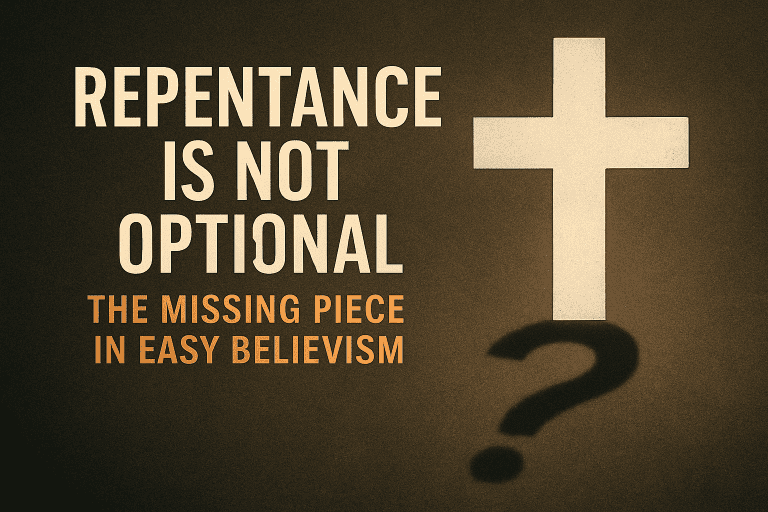Why Worship Style Matters (and What God Actually Cares About)
Walk into any church on Sunday morning, and you’ll hear the question whispered somewhere in the room: Does it really matter how we worship?

Some people raise hands under blue stage lights; others bow heads beneath stained glass. I’ve heard the same conversation for decades, in sanctuaries and staff meetings alike—and I’ve learned that what feels like a style debate is usually a theology question in disguise. The deeper issue isn’t taste. It’s truth. That’s why worship style matters.
Why Worship Style Matters to God
Scripture doesn’t hand us a playlist, but it gives a pattern. Jesus said the Father seeks those who worship “in spirit and in truth” (John 4:23-24). Style is secondary to substance, yet it still reveals what we believe about God. A congregation’s sound becomes its confession: reverence or casualness, awe or familiarity.
I’ve led worship beneath stained glass and beneath LED strips. In both settings the same truth held—God was honored only when hearts were honest. That’s why worship style matters: it displays the theology a church actually lives.
Jesus said the Father seeks those who worship “in spirit and in truth” (John 4:23-24). Desiring God explains this balance between Spirit and truth beautifully here. When we treat worship as optional or purely stylistic, we forget that it shapes our view of God Himself. Style doesn’t just express belief—it trains it.
What the Bible Regulates in Worship
The New Testament never commands organs or guitars, robes or jeans. It regulates the spirit of worship—truth, reverence, and order (1 Corinthians 14:26-33). Paul cared that gatherings built up the body, not that they followed one cultural form. The early church sang psalms, hymns, and spiritual songs (Colossians 3:16); the emphasis was unity through Christ, not uniformity of sound.
A biblical worship style is one where doctrine and devotion meet. That balance, not the instrument list, determines why worship style matters.
When Form Becomes the Focus
Anything repeated long enough can eclipse the reason we repeat it. Israel’s offerings in Isaiah 1 became detestable because the heart had left the altar. Even the best liturgy can decay into performance.
I remember one Sunday when everything looked perfect—the readings, the choir, the rhythm—but something felt hollow. That service taught me a painful lesson: precision can hide distance. Form isn’t the problem; forgetting God inside the form is.
Our hearts drift toward routine because routine feels safe. We like predictability more than presence. That’s why God kept calling Israel back to remembrance—to worship that cost something. True worship always demands awareness, not autopilot.
The Beauty of Diversity in Worship
Around the world, believers worship in thousands of languages and countless melodies. In Africa, drums echo joy. In Asia, choirs lift harmonies that trace back centuries. In small U.S. chapels, a lone piano leads hymns older than the nation itself. All of it declares the same Lord.
I’ve visited churches across small towns and suburbs where the accents, instruments, and ages all differed—but the sense of reverence felt identical. In those moments I’m reminded that worship doesn’t need to sound the same to carry the same Spirit.
That global chorus reminds us why worship style matters: it proves that truth transcends culture. God delights in diversity when hearts are unified in praise.
What Style Reveals About the Church
A church’s form of worship silently preaches its theology. Traditional structures communicate continuity—God is holy, steady, worthy of awe. Contemporary forms communicate accessibility—God is near, present, approachable. Both instincts reflect biblical truths when held in balance.
I’ve watched congregations fall silent between songs, and that quiet often spoke louder than the music itself. In those moments, reverence felt tangible—as if everyone remembered Who they were singing to. That’s why worship style matters.
Dangers at Both Ends
Every expression of worship carries a temptation.
- Traditional drift: form without fire—ritual repeated but not remembered.
- Contemporary drift: energy without anchor—emotion unmoored from doctrine.
Revelation 3:1 warns, “You have a reputation for being alive, but you are dead.” Churches can look vibrant or faithful and still miss the Spirit. Guarding against both extremes is part of discerning why worship style matters—because it shapes whether faith stays alive or only looks alive.
The healthiest churches learn to borrow the strengths of both sides—anchoring tradition with joy and tempering innovation with truth. Worship that blends reverence and rejoicing mirrors heaven’s own sound.
What God Actually Cares About

The Bible reveals four pillars of authentic worship:
- Truth (John 17:17) — Every lyric and sermon must align with Scripture.
- Spirit (Hebrews 12:28-29) — Our hearts approach God with awe, not apathy.
- Order (1 Corinthians 14:40) — Worship builds up, not confuses.
- Christ-Centeredness (1 Corinthians 2:2) — The gospel remains central.
After decades of teaching, I’ve never seen a church fail that kept those four before it. The rest—tempo, lighting, instrumentation—are tools. The tools don’t move heaven; obedience does.
Reclaiming Unity Through Worship
Division over style is rarely about songs; it’s about surrender. When Christ becomes the focus again, hands raised beside folded hands no longer clash—they harmonize. I’ve watched believers from radically different traditions kneel side by side and sing the same truth with different accents. That’s the unity Jesus prayed for in John 17, the unity worship was meant to create.
Congregations that intentionally blend songs, explain their choices, and pray together for humility often find the temperature of disagreement drop. I’ve sat in meetings where leaders repented before planning another service—and the next Sunday, the worship felt different. God honors humility more than harmony.
And that unity explains again why worship style matters: it can either magnify our divisions or showcase God’s reconciling grace.
Worship Beyond the Service
What happens after the final song may reveal more about worship than anything sung before it. True worship follows believers into ordinary life—how we treat coworkers, family, and strangers. That’s why Paul called our whole lives “a living sacrifice” (Romans 12:1). When a church’s Sunday sound shapes its Monday conduct, why worship style matters becomes visible to the world.
Practical Guidance for Churches and Believers
For leaders: Teach the “why” behind every form. Explain what Scripture shapes each element of the service. A congregation that knows the meaning behind the motion worships with understanding.
For believers: Choose a church by its doctrine, not its playlist. Ask whether Christ is central, Scripture is taught, and reverence is evident.
For both: Evaluate worship by transformation, not production. Does it stir repentance? Gratitude? Awe? That’s the measure heaven keeps.
Worship That Lasts
So why worship style matters isn’t about nostalgia or novelty. It’s about theology in motion—what we truly believe about God expressed through sound, silence, posture, and heart. Every generation wrestles with how to sing its faith into the noise of its age. The form will change, but the assignment never does: magnify Christ above all.
The day we stop arguing about style and start adoring Christ—that’s when worship becomes what God intended. And that’s the moment every melody, ancient or new, finally fulfills its purpose.
For more on how these truths play out in real congregations, read What It Means to Be a Traditional Church and Traditional Church vs Contemporary Church.
Walt Roderick is a Christian writer who cares more about biblical clarity than online applause. He writes to strengthen believers and confront spiritual drift.






